How to choose a grout color?
A few basic rules to consider when choosing:
- When using multi-colored or two-color tiling and mosaics, for grouting, you should select a color close to the lighter tone used in the design or a colorless fugue.
- It is advisable to choose a mixture of a dark or contrasting shade only if the tile material on the floor or on the wall is laid perfectly evenly. In case of errors and irregularities on the surface, a putty in light colors is better.
- To visually expand the room, light tiles are selected in combination with a similar grout, dark tones, on the contrary, visually reduce the space.
- It is better to choose a putty for floor tiles in darker colors, as it is quite practical and less prone to contamination.
Color combination options
Due to well-chosen color combinations, you can get three options for effects:
- One color. It is the simplest tandem that is a single whole. A one-color combination, perfect for lovers of laconic, not too flashy design, and also allows you to mask some of the flaws in the finish in the form of uneven joints or chips.
- Contrasting grout. It endows the atmosphere with special expressiveness and favorably emphasizes the geometry and laying of the tiled elements, giving them a deeper and more intense look.
- Shades. With the help of such a solution, it is possible to unobtrusively highlight the geometric shape, pattern and color of the cladding, thereby forming a calm design, not devoid of expressiveness.
The photo shows a bathroom interior with a contrasting grout for wall and floor tiles.
Currently, there are collections of tiled models that already have a tint solution for putty. Most often, such a color palette is particularly original, for example, the black finish is complemented by a pearl-white fugue, beige - with grout in chocolate tones, and olive - in graphite.
What kind of grout is right for light colored tiles?
For classic white tile cladding, you can choose a contrasting black or brown grout. The combination with red, burgundy fugue, as well as combinations with pastel peach, mint, pink, blue or blue grout is no less bold and effective. Beige tiles go well with neutral chocolate, gray, milky tones or darker black fugue.
Pictured is a wall-mounted white tile finish with a blue joint.
Light blue tile finishes can be accentuated with white, yellow or dark blue color schemes.
On the picture bathroom with tiled walls blue with white grout.
Which grout to choose for dark tiles?
Brown ceramics will harmoniously complement a light beige, white or plain brown putty, and a combination with a yellow or black fugue will also look quite interesting. The borders of the cladding are blue, the grout will outline in creamy brown, gray, white, azure blue, fiery red, orange, yellow or blue tones.
For a black finish, it is better to pick up a pearl white, mother of pearl, beige, red or yellow putty. Such a monochromatic combination is used very carefully and is not suitable for decorating small rooms.
The photo shows a combination of a white grout mixture with a gray tiled finish in the interior of the bathroom.
For a calm and harmonious look, a gray tiled finish with seams made in white, dark or light gray tones will be appropriate, you can add originality to the atmosphere by using dark red, dark blue, blue, yellow, purple, lilac, pink and coral colors ...
The photo shows the interior of a modern kitchen with a work area decorated with black tiles with white grout.
Choosing a grout for tiles with different textures
For tiles imitating light woods, you can choose a gray, beige, sandy or milky putty, cladding with imitation of dark wood, for example wenge, is perfectly combined with seams made in light shades.
Marbled products look harmoniously with joints that have black, dark gray, white and even reddish tones. To maintain the interesting texture of the brick finish, special compositions with small fractions are selected.
Popular grout and tile combinations
The most commonly used shade combinations.
White tiles with black grout
A dark grout compound looks especially advantageous in combination with contrasting white tiles or mosaics, which allows you to achieve a simple, but at the same time quite effective and elegant design solution. However, this option is appropriate only in the case of perfectly even and accurate tile application on the plane.
The photo shows a white tiled cladding with black grout on the wall in the interior of the kitchen.
The black and white combination is classic, austere and sophisticated. In addition, using this technique, you can visually enlarge the room.
White
The snow-white putty is a versatile option that harmoniously combines with both contrasting dark and calm light tiled finishes. Such a design is always distinguished by a very beautiful and neat appearance and is perfect for any interior.
In the photo, white grout in combination with yellow diamond-shaped tiles in the design of the work area in the kitchen.
Also, a white fugue is an ideal binder when using multi-colored tile material.
In the photo there is a kitchen apron, lined with glossy tiles, a black boar with white grout.
White tiles with colored grout
White finish with colored joints or with a fugue with two or more shades, looks dynamic, creative, gives the interior a special uniqueness and sets it a certain mood. For example, yellow putty can fill a room with warmth and make it more sunny, while green and turquoise joint filler can significantly freshen the environment.
Gray tile with black grout
When using a gray finish with a contrasting black fugue, it turns out to divide the plane into separate segments and thereby achieve a sufficiently original effect that ideally complements a certain area of the interior.
Combining colors in the interior of rooms
Variants of color combinations in rooms for various purposes.
Choosing a grout for the kitchen
In this room, tiles are a particularly favorite design solution in the design of a work area with a kitchen backsplash.As a joint filler, choose a moisture and vapor-proof epoxy grout, which can differ in the most unexpected color scheme. Also, this grout is often supplemented with shiny components and glitters, which allow you to achieve an interesting effect in the form of silver, gold, metal or bronze joints.
In the photo there is a kitchen with a work area lined with brown tiles with a white fugue.
Bathroom Ideas
Putty for joints, not only endows the cladding with a complete and complete appearance, but also prevents moisture and dirt from getting under the tiles, which in the future does not contribute to the appearance of mold. Depending on the design of the bathroom, the fugue can have any color scheme or, due to special additives, differ in a pearl-nacreous luster, sparkling and glowing in the dark.
In the photo, the interior of the bathroom with blue tiles in combination with a fugue of a golden hue.
Hallway examples
In the hallway, floor putty is mainly used, which is often laid out with porcelain stoneware. Here you should select compositions in not easily soiled gray, black or brown tones, since light seams quickly become dirty.
Photo gallery
When choosing a grout for tile joints, it is important to take into account not only its constituent components, but also the shade range, due to which it turns out to give the plane being shaped, integrity, completeness and special harmony.

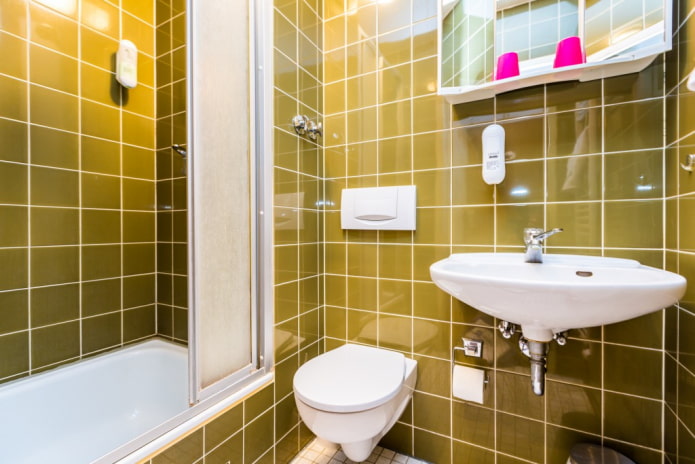
 10 practical tips for arranging a small kitchen in the country
10 practical tips for arranging a small kitchen in the country
 12 simple ideas for a small garden that will make it visually spacious
12 simple ideas for a small garden that will make it visually spacious
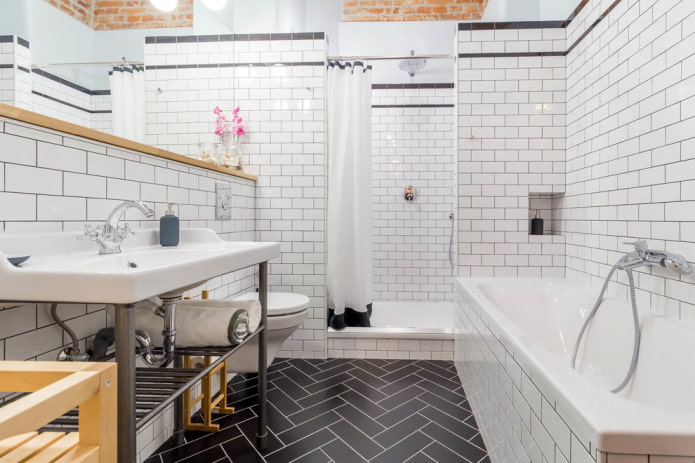
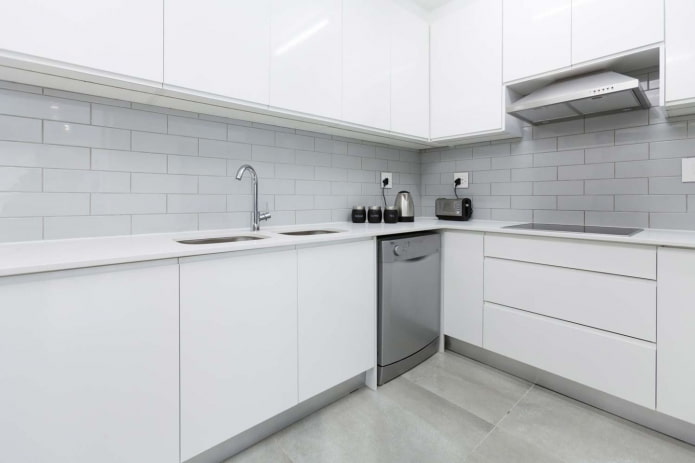
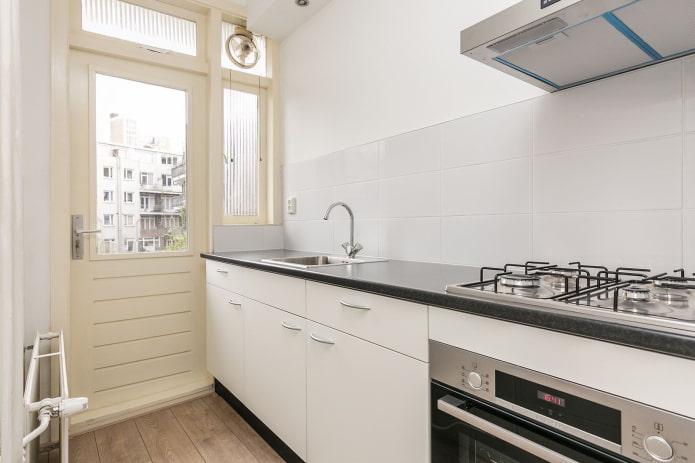
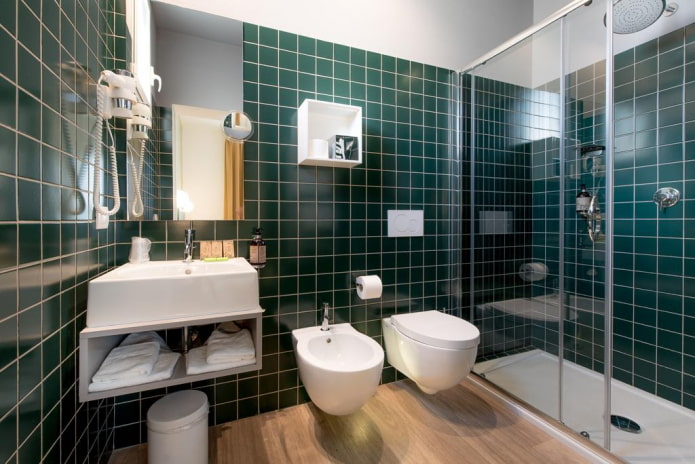
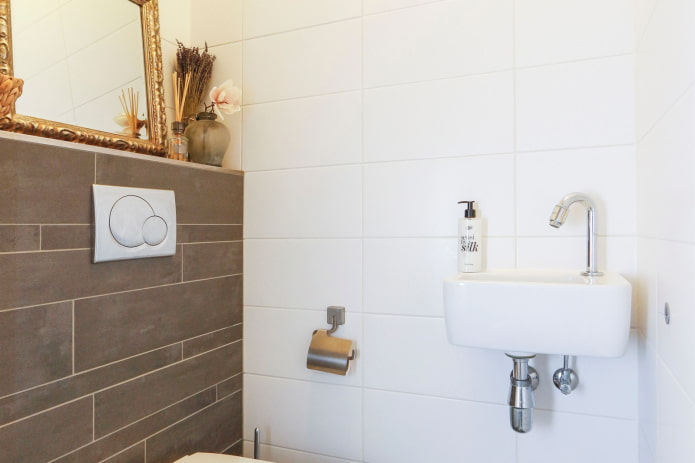
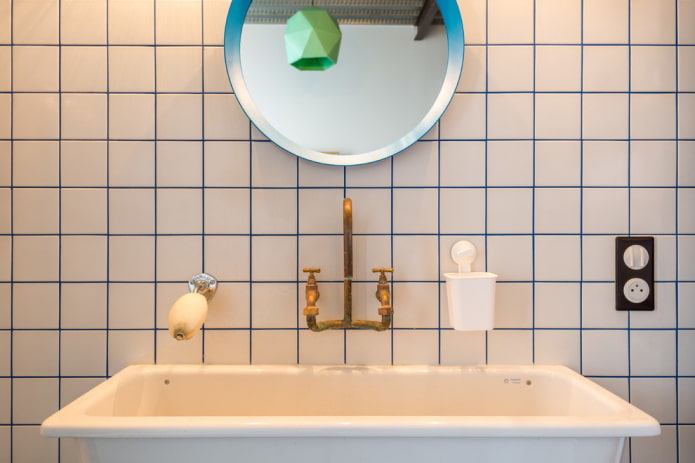
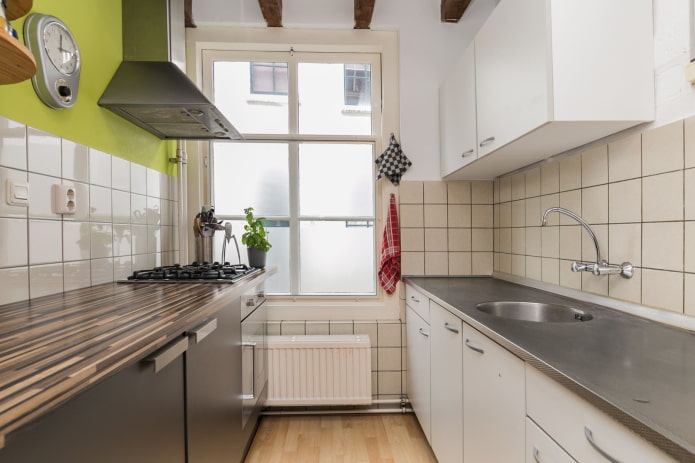
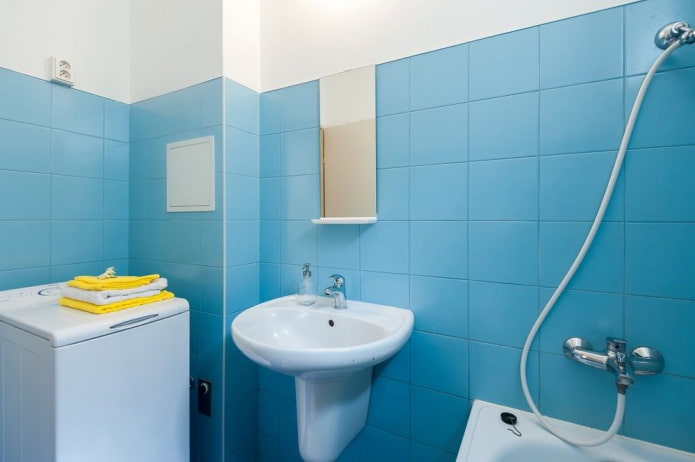
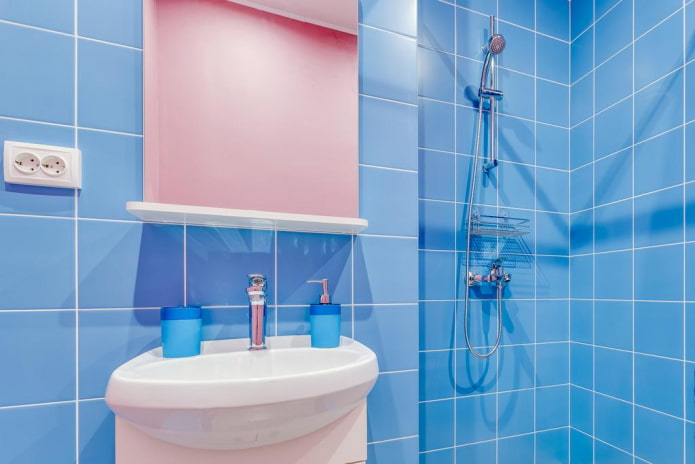
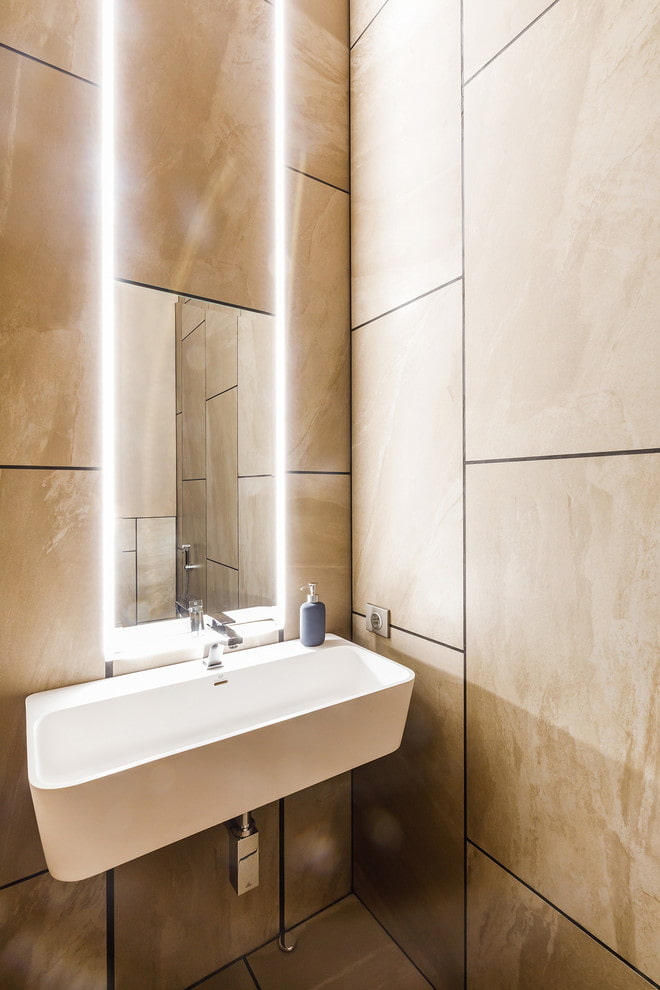
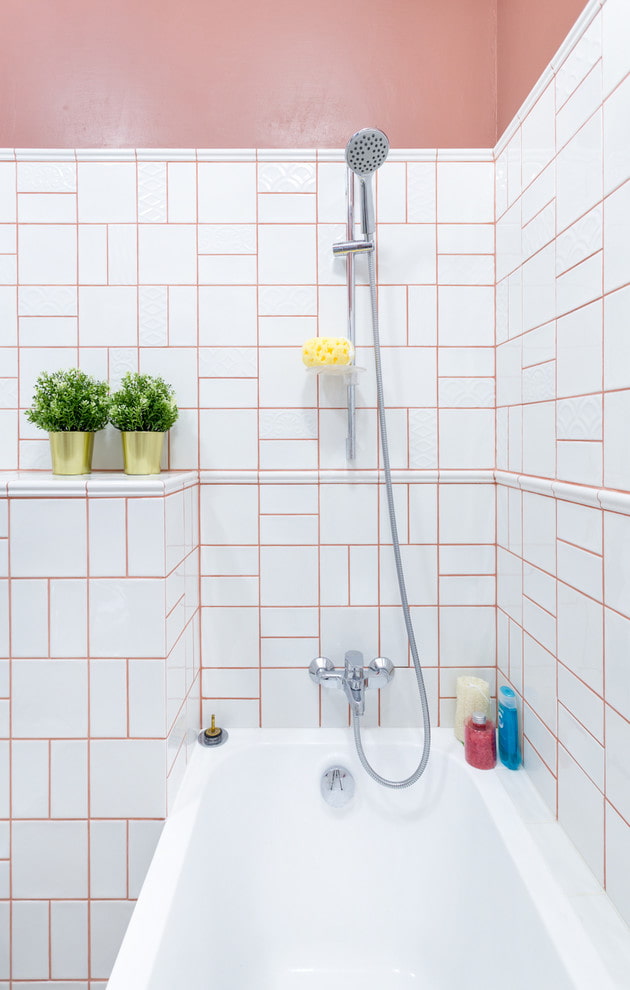
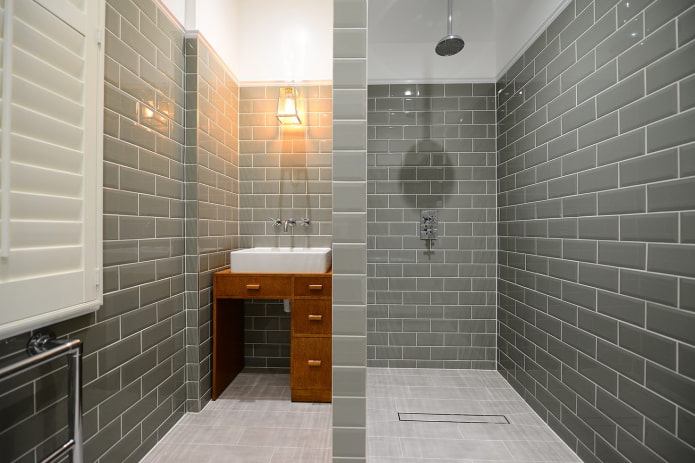

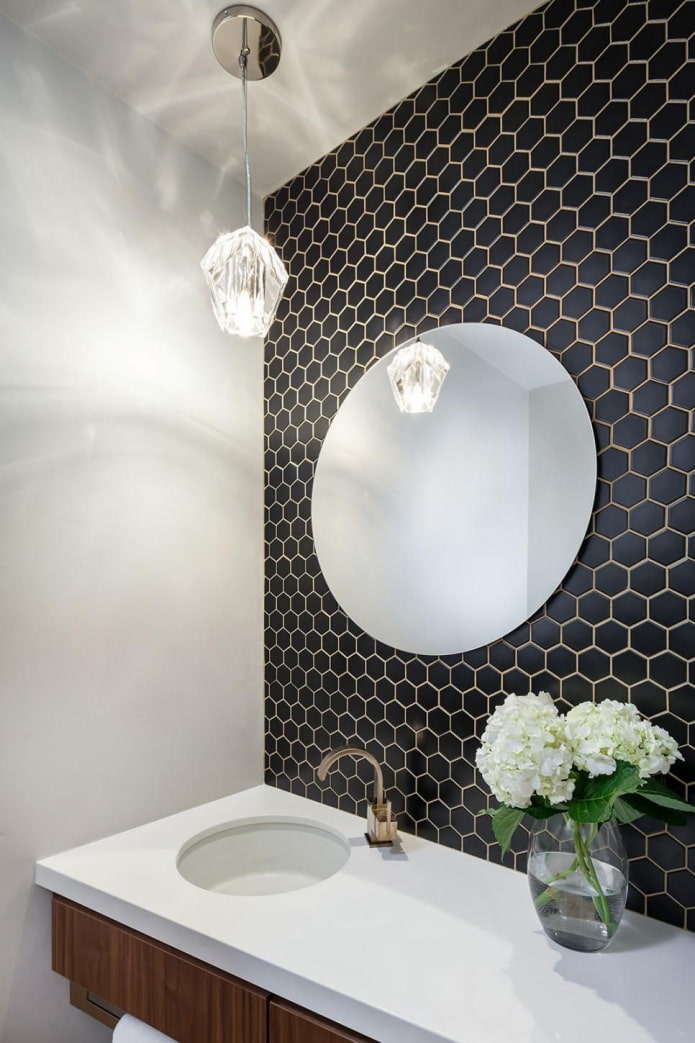

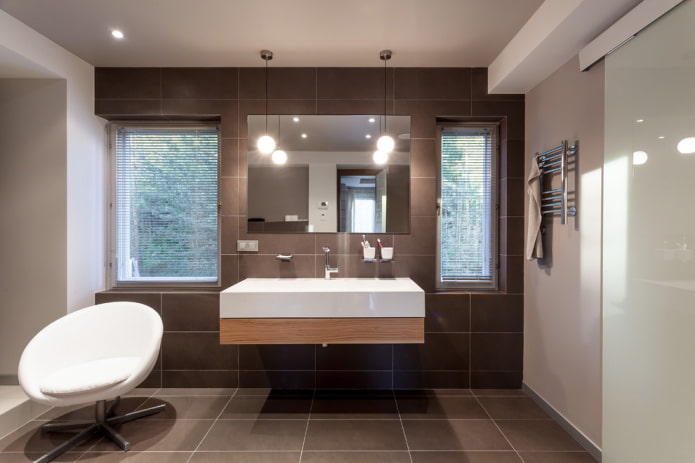
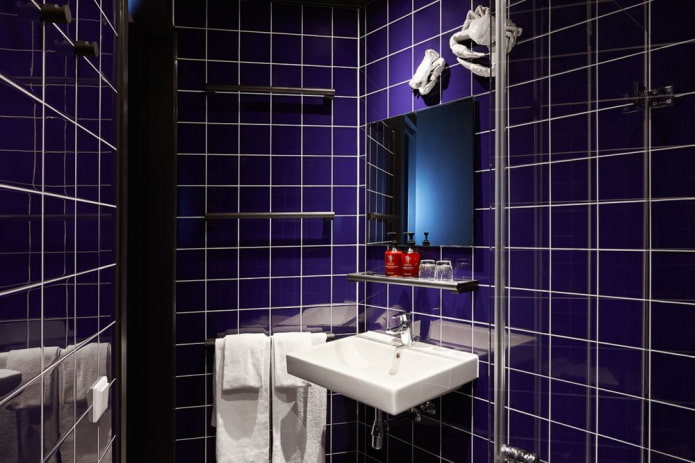
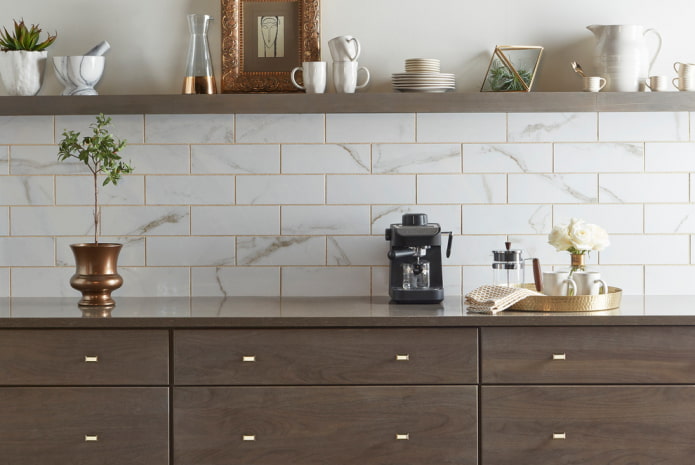
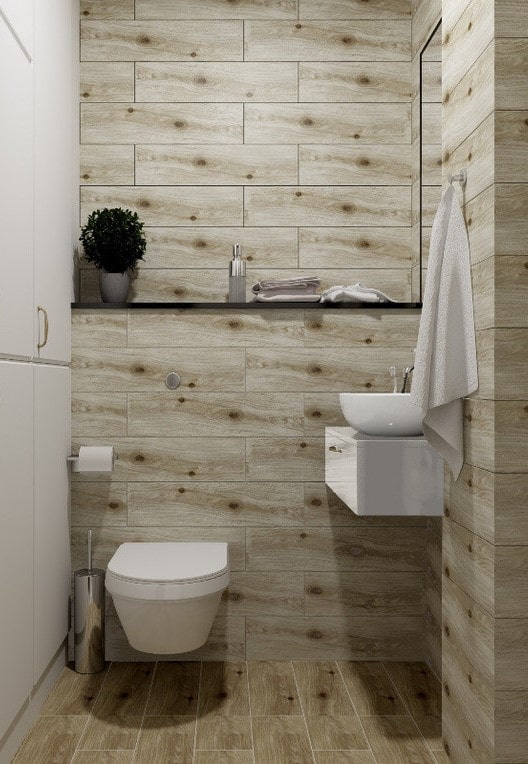
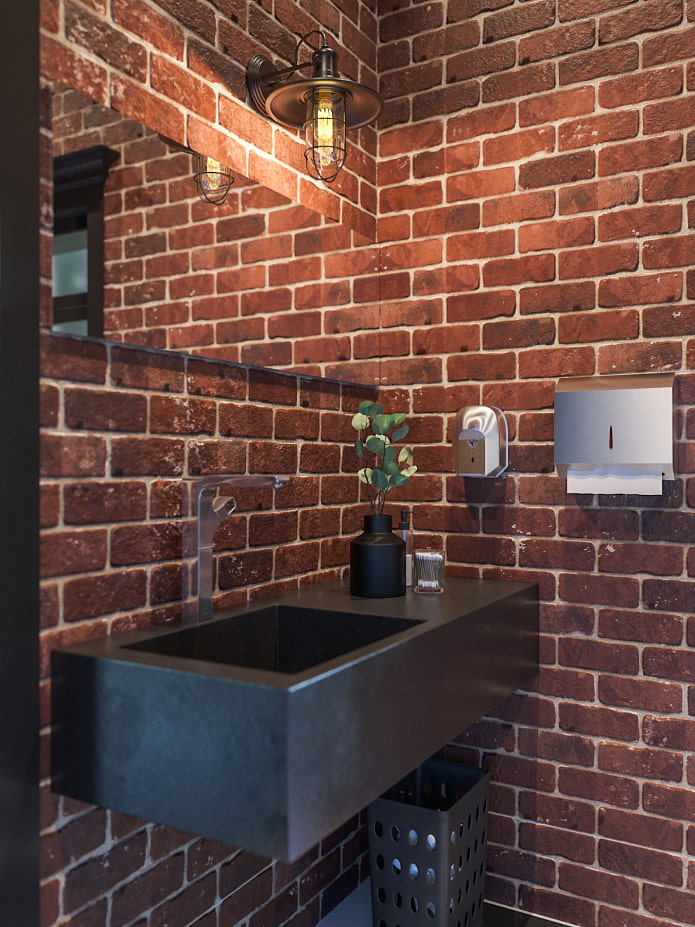


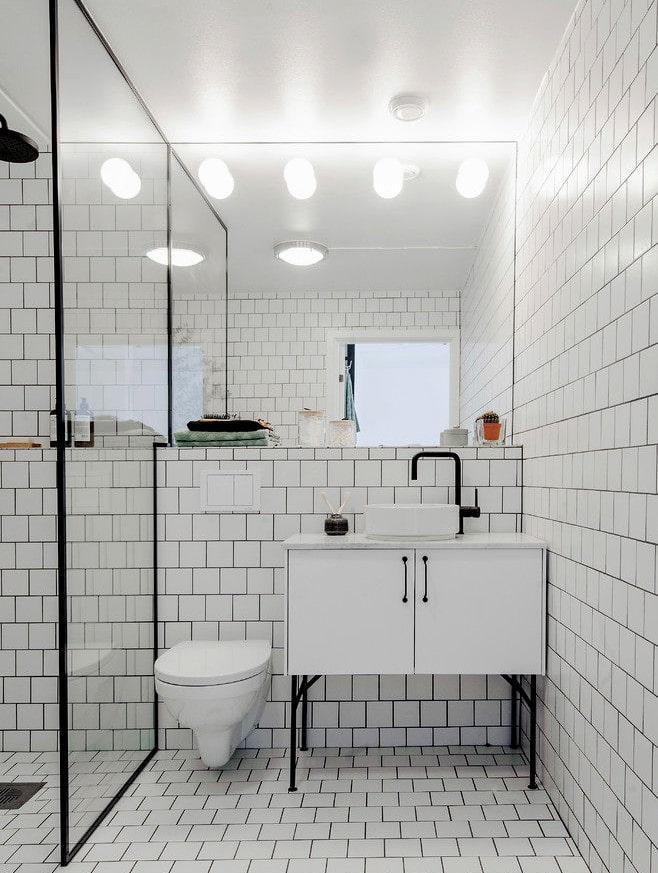
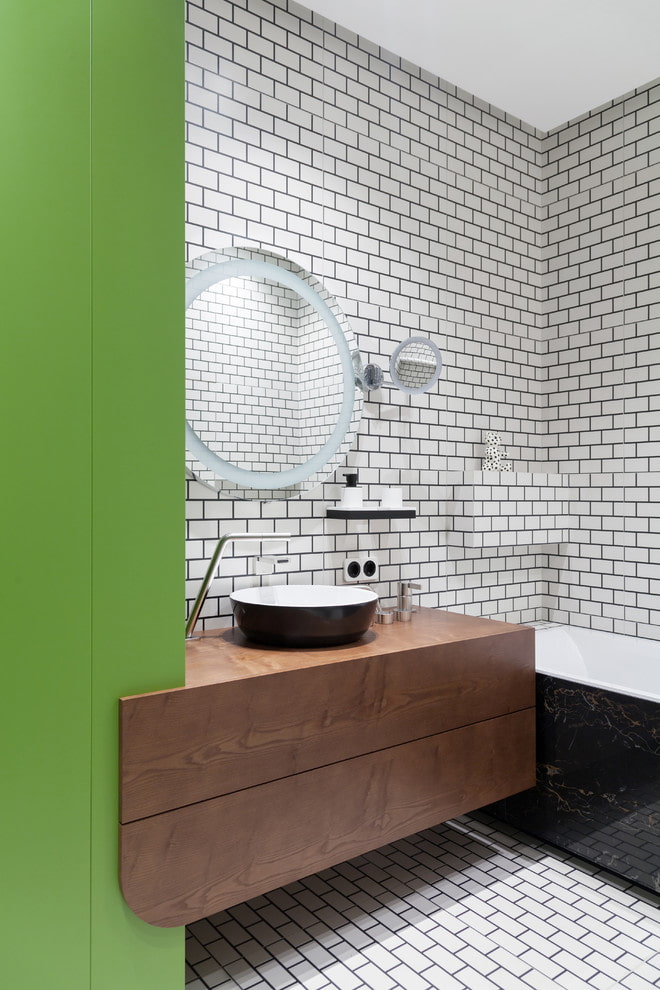
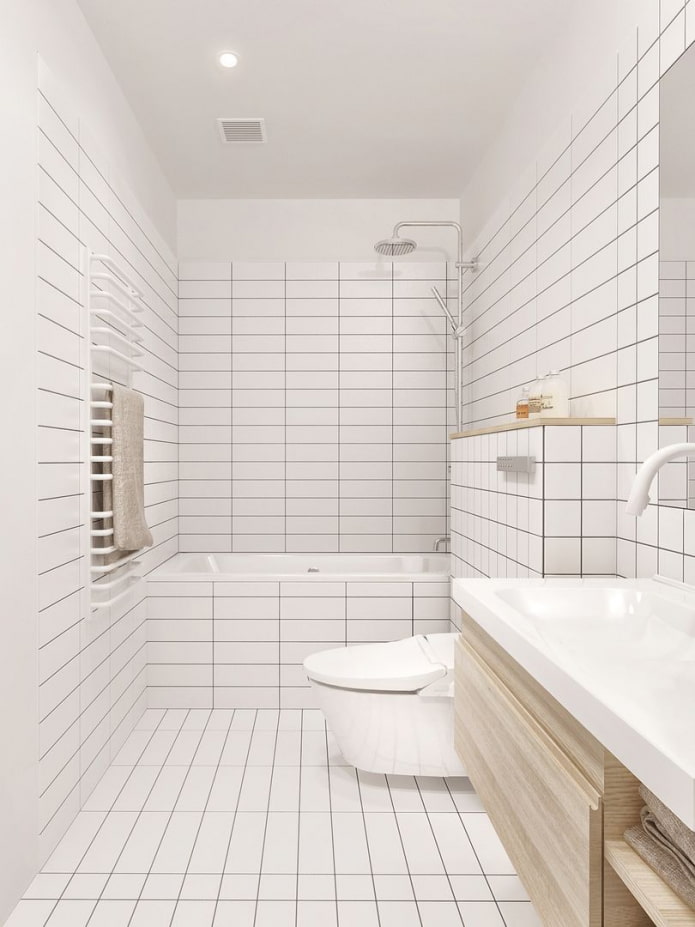
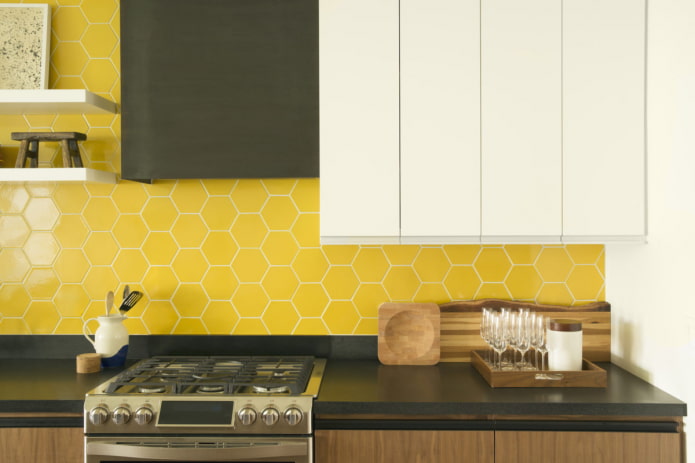
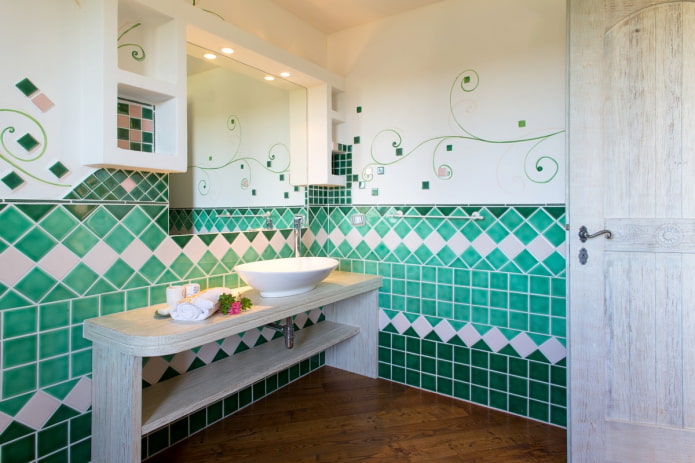
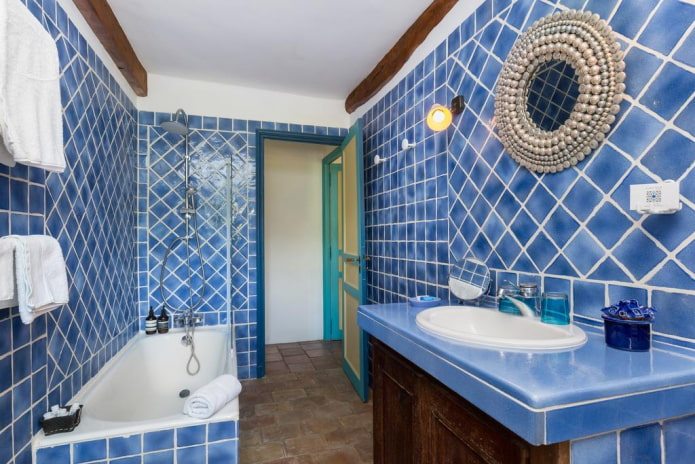

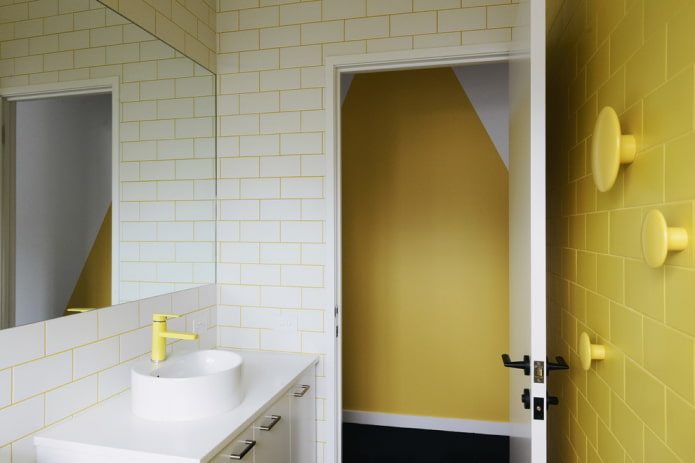
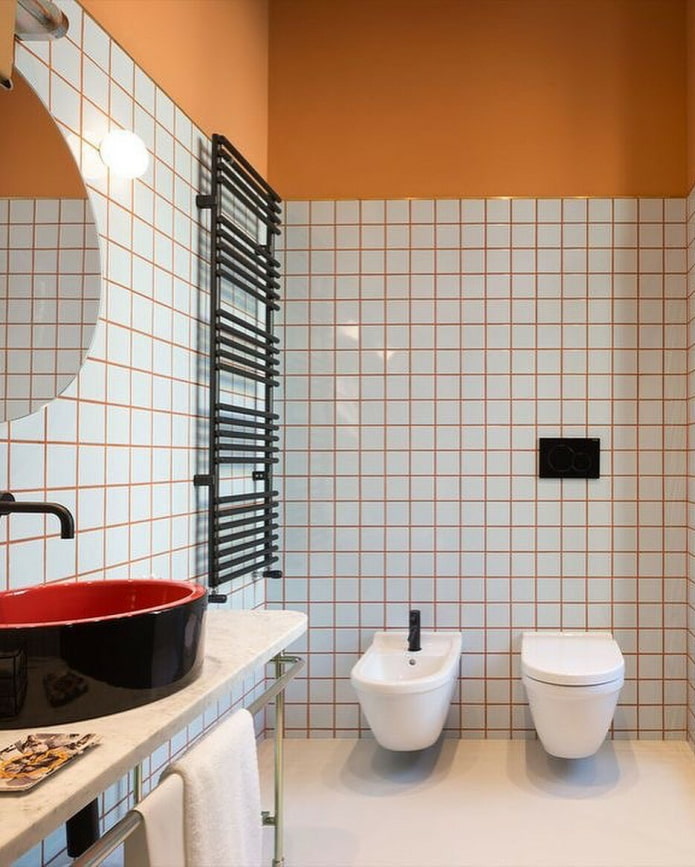
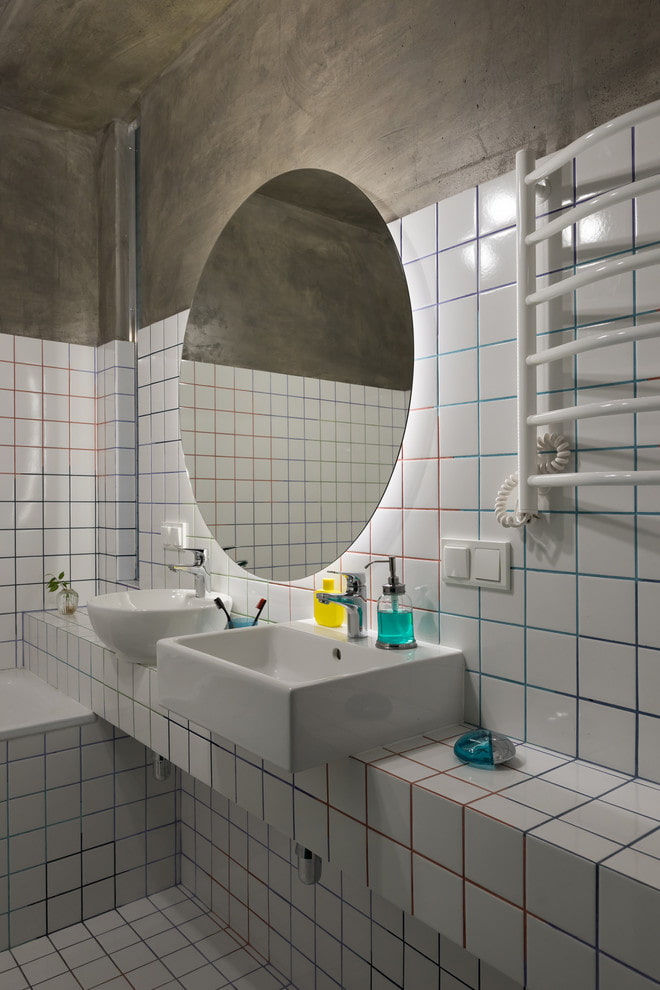
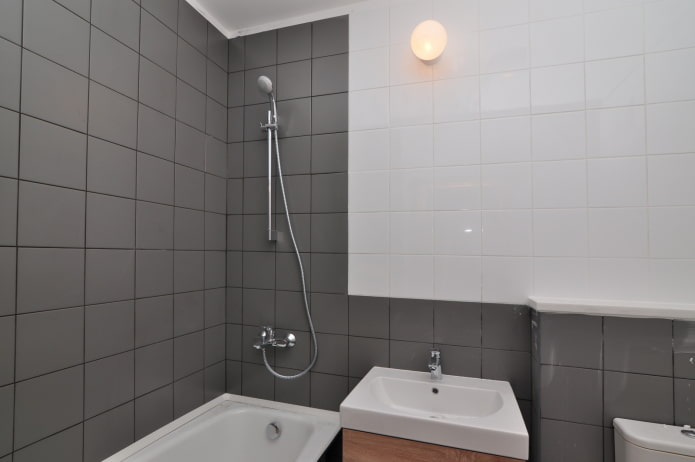

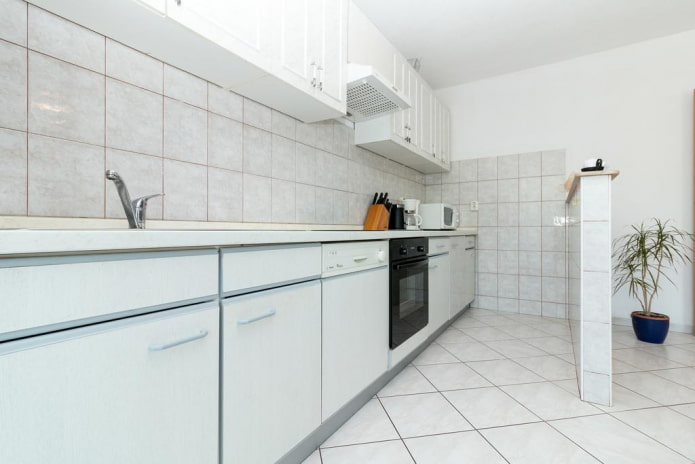
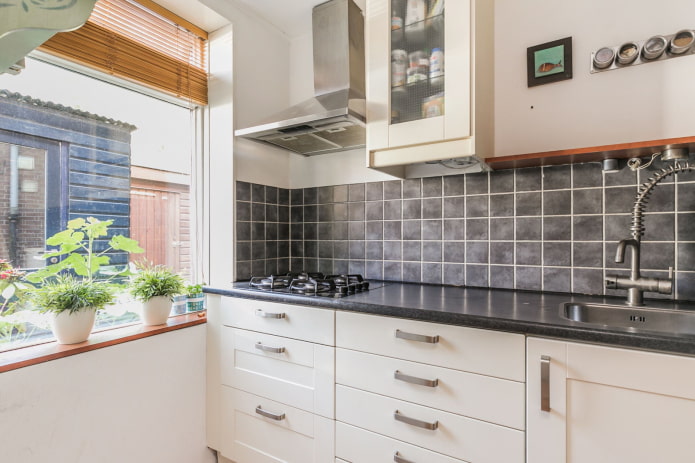

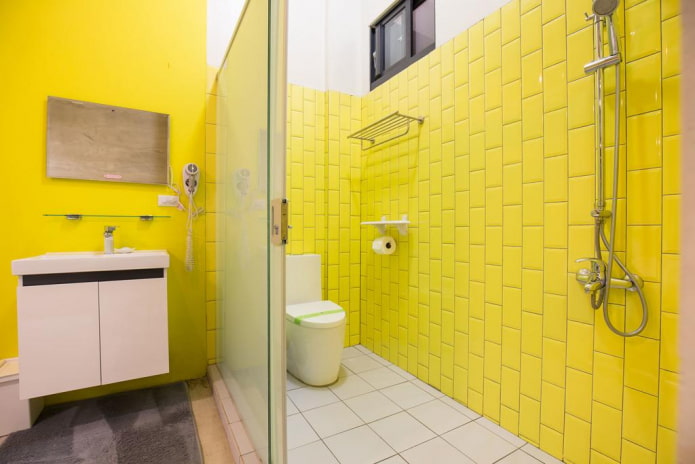
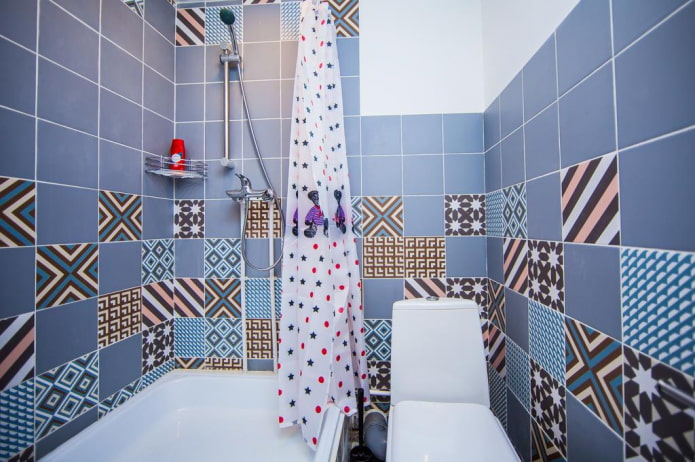
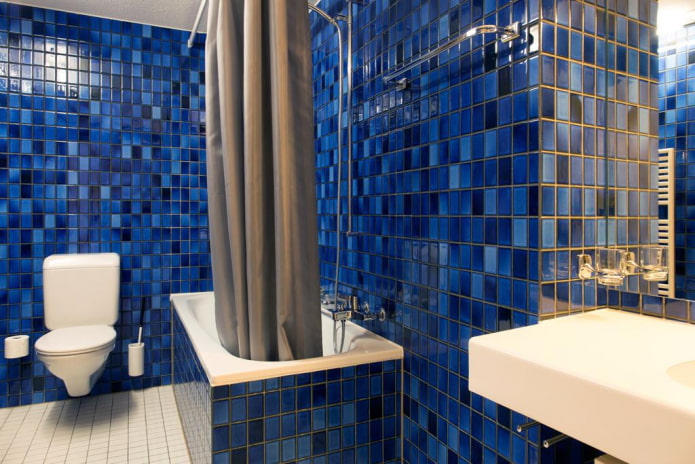

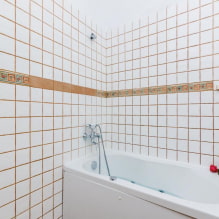
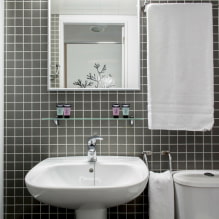
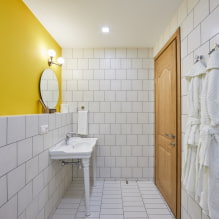
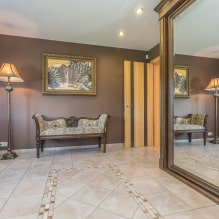
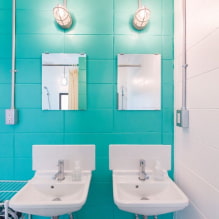
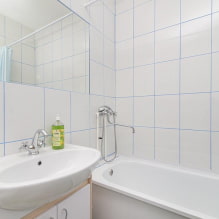
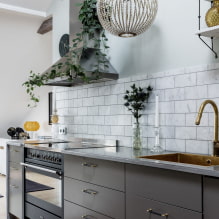
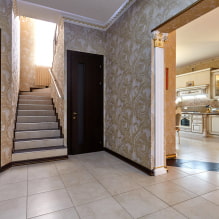
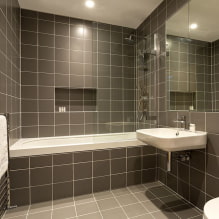
 13 bad habits a good housewife shouldn't have
13 bad habits a good housewife shouldn't have 24/7 home cleanliness - 4 secrets for the perfect housewife
24/7 home cleanliness - 4 secrets for the perfect housewife 6 hotels in Sochi that will give odds to the promoted foreign hotels
6 hotels in Sochi that will give odds to the promoted foreign hotels Top 10 interior design trends 2020
Top 10 interior design trends 2020 Rating of cheap TVs with Smart-TV
Rating of cheap TVs with Smart-TV New Year's LED garlands on AliExpress - we disassemble while it's hot, so that it's bright at home
New Year's LED garlands on AliExpress - we disassemble while it's hot, so that it's bright at home